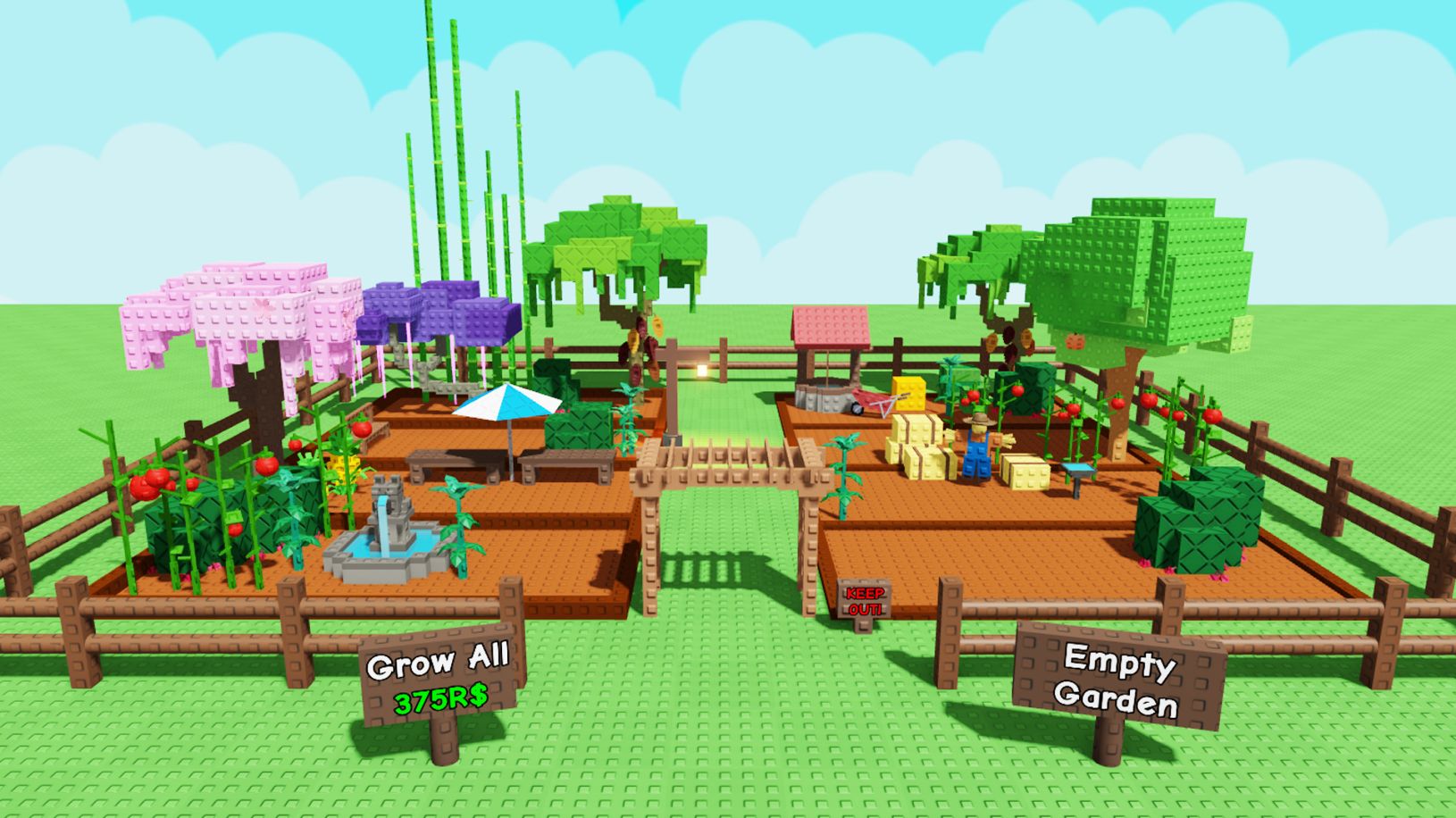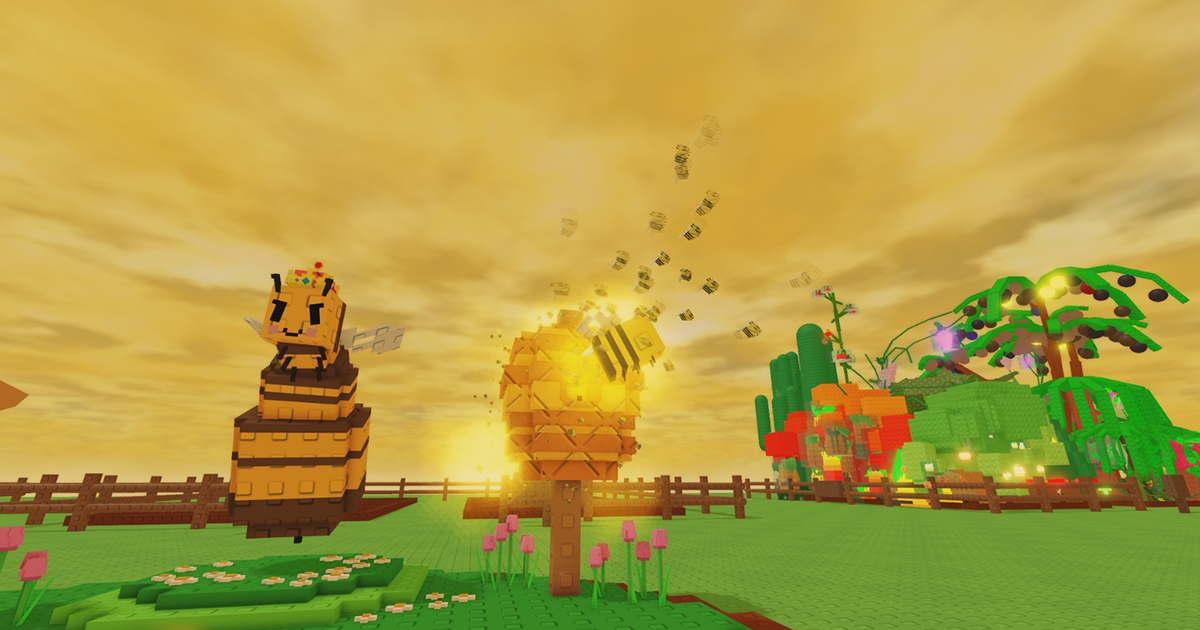
From Seed to Sensation: What Is Grow a Garden?
Launched in March 2025, Grow a Garden is a Roblox-based farming simulator developed by a 16-year-old creator under the name BMWLux. What started as a small project quickly ballooned into the most-played game in Roblox history, with over 21.3 million concurrent players at its peak. Players begin with a simple plot of land and some starter seeds. They plant, water, and harvest crops, earning a currency called “Sheckles” used to expand their garden, buy rare seeds, or decorate with pets and items. Offline growth mechanics allow players to earn even when not logged in. The design is simple but deceptively deep, appealing to both casual gamers and min-maxing strategists. BMWLux collaborated with Splitting Point Studios and Do Big Studios to scale the project and introduce monetization and seasonal updates, helping push the game to global prominence.
Why Did Grow a Garden Explode? A Perfect Storm of Features
Viral Mechanics and Community Loops
The social media storm around Grow a Garden began on TikTok and YouTube, where players posted time-lapses of their growing gardens and showed off rare crops. Roblox’s discovery algorithm amplified its reach, and streamers capitalized on the low barrier to entry. In early June, community posts helped push concurrent users past 16.4 million, surpassing Fortnite. Just weeks later, it smashed through 21 million. The game’s appeal? Simplicity, relaxation, and creativity—tied into the cozy gaming trend that has dominated Gen Z and Gen Alpha spaces.
The Design that Captivated a Generation
Grow a Garden centers around accessibility and chill vibes. You plant a seed, wait for it to grow (even when offline), harvest it, and maybe unlock a surprise. Rare mutations and crossbreeds keep players coming back, while seasonal updates introduce new crops and animals. There’s no combat, no pressure, and no leaderboard stress—just growth, beauty, and a shared community experience. It feels like a digital bonsai simulator wrapped in a Tycoon game.
Record-Breaking Success
Grow a Garden isn’t just popular—it’s historical. On June 21, it officially reached 21.3 million concurrent players, the highest number in Roblox’s history and higher than Fortnite’s all-time peak. Over 10 billion visits were logged in under three months. In May 2025 alone, the game earned $12 million in revenue through Robux purchases. Analysts reported Roblox’s stock surged 4–21% due to the game’s explosive success. Even major financial outlets like Bloomberg and Business Insider highlighted it as a breakout example of Roblox’s monetization and community tools.

Monetization and Controversy
A Friendly Face with a Pay-to-Win Shadow?
Despite its wholesome appearance, Grow a Garden sparked criticism for its monetization mechanics. Players can pay Robux to accelerate growth or—controversially—steal crops from other gardens. Former Square Enix executive Jacob Navok described the game as “somewhat evil,” referencing its casino-like approach to engagement and microtransactions. The ethical concern: this is a game played largely by children, many of whom are exposed to gambling-style mechanics. Though the game offers everything for free with time, the Robux advantages have created a soft pay-to-win ecosystem where money buys not just speed but dominance.
Bots, Gray Markets, and Unofficial Economies
As the game gained popularity, a black market emerged. Bots were created to auto-farm and mutate crops, then sell rare accounts or pets on secondary platforms like eBay and Discord. These activities violate Roblox’s terms but remain difficult to police. Some sellers even packaged rare pet codes or fully developed gardens for sale—adding to the controversy about exploitation and age-inappropriate monetization.

The Cozy Revolution: What Grow a Garden Means for Gaming
Cozy, Not Casual
Grow a Garden represents a growing genre of “cozy games”—titles that don’t stress players out but still offer deep engagement. Think Stardew Valley, Animal Crossing, and PowerWash Simulator. Grow a Garden fits perfectly in this category. It offers beauty, peace, and personal expression in a digital space. It’s a contrast to high-stakes shooters or competitive MOBAs and shows that modern gamers are craving comfort as much as conquest.
Roblox as a Launchpad
This title proves Roblox’s immense power as a UGC (user-generated content) platform. A teen with an idea used Roblox’s built-in tools, audience, and monetization structure to create the biggest game of 2025. It’s a clear sign that the future of gaming may not lie in billion-dollar development teams—but in platforms that empower players to create.
Idle Gaming Evolved
The offline growth mechanic—where crops grow even when you’re logged out—is a genius stroke. It borrows from mobile idle games, but within a shared world that encourages return visits. This passive design makes Grow a Garden endlessly addictive without being demanding. You feel rewarded whether you play for five minutes or five hours.

Events, Updates, and Community
Seasonal updates drive engagement with fresh content. The “Bizzy Bees” expansion added bee pets and honey crops, while the “Prehistoric Patch” introduced fossil-themed fruits and dino pets. These regular updates keep the player base hyped and coming back. Community design contests, gifting systems, and leaderboard rewards reinforce the social nature of the game. It’s not just about growing plants—it’s about growing together.
Grow a Garden as a Case Study in Game Design
Simplicity Wins
The core loop is basic: plant, grow, harvest, repeat. But the genius is in its polish. The timing is just right. The sounds are soothing. The art is inviting. The economy, while simple, is robust enough to support planning and progression. The design encourages flow without friction.
Ethical Monetization Is Still a Challenge
While the developers claim the game is balanced for free players, the temptation of paid speed-ups and crop stealing has triggered pushback. There’s no clear messaging about odds for mutations or what you’re really getting with certain purchases. In 2025, that kind of obfuscation feels outdated and risky—especially with younger audiences.
Cross-Platform Success
Grow a Garden works on mobile, PC, and Xbox—broadening its reach. Its simple interface and cloud saves make it an ideal cross-platform experience, further fueling its viral growth. You can plant a seed on your phone and harvest it on your laptop hours later.
What Developers Can Learn from Grow a Garden
- Simplicity scales: You don’t need complexity to go viral—just clear goals, feedback loops, and aesthetic charm.
- Events matter: Scheduled content creates urgency and return visits.
- Social amplifies growth: Encourage gifting, visiting, trading, and sharing.
- Monetization must evolve: If children are your audience, design with empathy and transparency.

Final Thoughts from Level Up Gazette
Grow a Garden Roblox is more than a breakout game—it’s a glimpse into gaming’s future. Built by a teenager, powered by community, and driven by emotion rather than adrenaline, it’s a blueprint for cozy domination in a digital age. Sure, it has flaws—especially around monetization and ethical design—but its impact is undeniable. The next generation of players isn’t chasing killstreaks—they’re tending to pixelated petunias, building community, and finding joy in simplicity. For those watching the future of gaming unfold, Grow a Garden isn’t just a trend. It’s a movement. And it’s blooming fast. Want to explore more cozy revolutions or breakdowns of UGC-powered hits? Stick with Level Up Gazette—we’ll keep you growing.